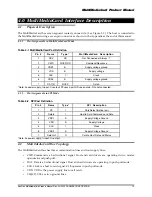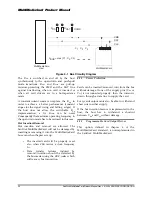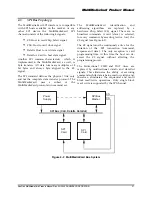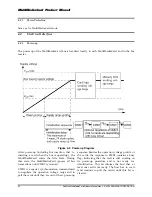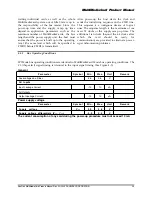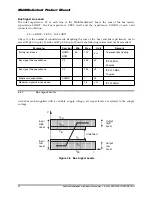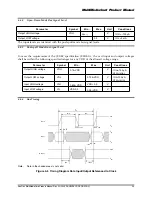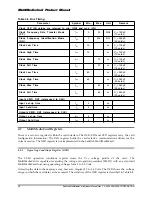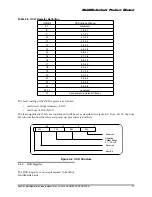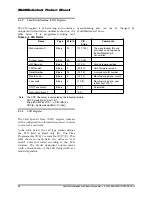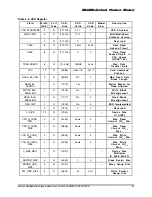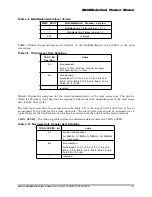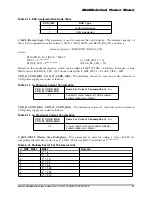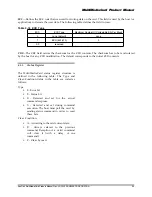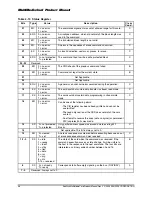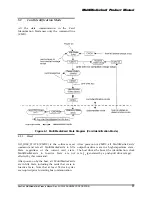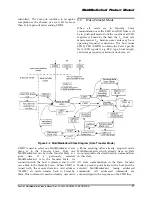
MultiMediaCard Product Manual
26
SanDisk MultiMediaCard Product Manual Rev. 2 © 2000 SANDISK CORPORATION
Table 4-3 Bus Timing
P a r a m e t e r
Symbol
M i n .
M a x .
Unit
Remark
Clock CLK (All values are referred to min. (VIH) and max. (VIL)
Clock Frequency Data Transfer Mode
( P P )
f
PP
0
20
MHz
C
L
≤
100 pF
(10 cards)
Clock Frequency Identification Mode
( O D )
f
O D
0
400
kHz
C
L
≤
250 pF
(30 cards)
Clock Low Time
t
W L
10
ns
C
L
≤
100 pF
(10 cards)
Clock High Time
t
W H
10
ns
C
L
≤
100 pF
(10 cards)
Clock Rise Time
t
TLH
10
ns
C
L
≤
100 pF
(10 cards)
Clock Fall Time
t
THL
10
ns
C
L
≤
100 pF
(10 cards)
Clock Low Time
t
W L
50
ns
C
L
≤
250 pF
(30 cards)
Clock High Time
t
W H
50
ns
C
L
≤
250 pF
(30 cards)
Clock Rise Time
t
TLH
50
ns
C
L
≤
250 pF
(30 cards)
Clock Fall Time
t
THL
50
ns
C
L
≤
250 pF
(30 cards)
Inputs CMD, DAT (referenced to CLK)
Input set-up time
t
ISU
3
ns
Input hold time
t
IH
3
ns
Outputs CMD, DAT (referenced to CLK)
Output set-up time
t
OSU
5
ns
Output hold time
t
O H
5
ns
4.5
MultiMediaCard Registers
There is a set of six registers within the card interface. The OCR, CID and CSD registers carry the card
configuration information. The RCA register holds the card relative communication address for the
current session. The DSR register is not implemented in the SanDisk MultiMediaCard.
4.5.1
Operating Conditions Register (OCR)
The 32-bit operation conditions register stores the V
DD
voltage profile of the card. The
MultiMediaCard is capable of executing the voltage recognition procedure (CMD1) with any standard
MultiMediaCard host using operating voltages form 2 to 3.6 Volts.
Accessing the data in the memory array, however, requires 2.7 to 3.6 Volts. The OCR shows the voltage
range in which the card data can be accessed. The structure of the OCR register is described in Table 4-4.








